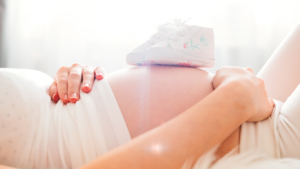Multiple life and materials science payloads and technology demonstrations returned to Earth from the International Space Station (ISS) as SpaceX’s 28th Commercial Resupply Services (CRS) mission, contracted by NASA, has come to an end. Many of these science and technology demonstration projects were sponsored by the ISS National Laboratory, aiming to bring value to humanity and foster commerce in low Earth orbit.
DEEPER DIVE: East Valley aerospace and defense sector shoots through the stratosphere
A quick look at some of the payloads that returned on SpaceX CRS-28:
- A student-led Genes in Space™ investigation tested a method to measure telomere lengthening in space. Telomeres are sections of DNA that protect chromosomes from damage. Results from research on telomere lengthening could aid in the development of future therapeutics to combat the aging process in people on Earth or those living in space. This project is from 2022 Genes in Space™ competition winner Pristine Onohua, a student at East Chapel Hill High School in Chapel Hill, North Carolina.
- An investigation from Stanford University aimed to leverage microgravity to improve the synthesis of materials for higher-efficiency and more economical photovoltaic devices (which convert sunlight into electricity) for solar energy applications. Renewable energy sources contribute 22% to global electricity generation, and photovoltaic devices are a fast-growing contributor to solar energy solutions. In this project, the research team seeks to create more efficient solar devices by annealing copper indium sulfide (CulnS2) semiconductor crystals in microgravity to reduce defects that occur when the crystals are produced on Earth.
- A project from Arizona State University funded by the U.S. National Science Foundation aimed to create and test predictive models to understand and control the fluid forces that cause protein aggregation (clustering) during drug development. In microgravity many processes that affect the behavior of fluids on Earth—such as convection, sedimentation, and buoyancy—are absent, allowing researchers to study fluids in ways not possible on the ground. Protein aggregation can be a significant limiting factor in drug manufacturing, affecting quality and yield, and results from this project could help mitigate these undesirable effects.
- The Zero G Kitchen Oven, developed by Nanoracks to explore new methods of food production in space, is returning to Earth after spending several years on station. This project, which launched in 2019, examined how to heat and then cool the space oven in a manner that is safe for crew members.
- SpaceX CRS-28 also carried supplies for the continuation of multiple projects that launched on previous missions, including one from pharmaceutical company Bristol Myers Squibb. This investigation aimed to improve the crystallization of biologic medicines (protein-based therapeutics derived from living cells). Results could allow the company to enhance the formulation and stability of these drugs so they can be given as a simple injection just under the skin, reducing the time patients have to spend at medical care facilities.




